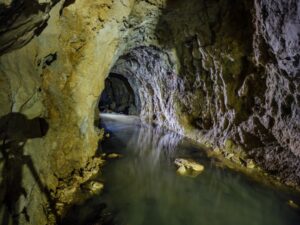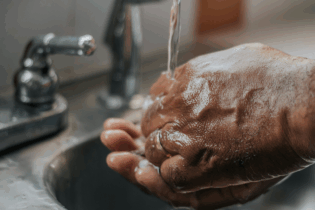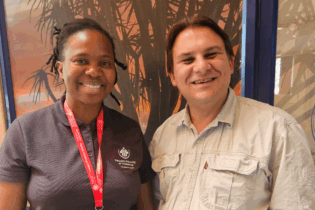The industry, mining and power generation sector accounts for more than 10% of the total annual water use in South Africa. The WISA Mine Water Division has drafted a position paper on water conservation and water demand management (WC/WDM).
All mines are required to license their water uses as per Section 21 of the National Water Act (No. 36 of 1998 [NWA]). Submitting a five-year WC/WDM plan with water-use efficiency (WUE) targets and an annual performance report is a condition of the water licence. This WC/WDM plan is a fundamental step in promoting WUE and is consistent with the NWA, which emphasises the effective management of water resources. WC/WDM simply refers to the minimisation of loss or waste of water through efficient and effective control of the supply and demand for water. Societal expectations of mining and associated performance in water management are substantial. Water security for current and future operations and WUE must be part of existing mining approaches. Mainstreaming of WC/WDM practices in mining companies is critical and important. Benchmarking and toolsThe Minerals Council South Africa collaborated with Department of Water and Sanitation (DWS) to develop WUE targets/benchmarks for the mining industry. The objectives are to provide a uniform and standard framework for WUE in the mining industry, to support regulatory function and voluntary compliance by the industry and to ensure sustainable water use for the strategic mining sectors likely to grow in the future. Mine WUE measures must be implemented on a site-specific basis and may include water treatment, recycling and reuse as the tools available for management. Mines must set internal WUE targets and implement WUE measures in all areas of the operation and account for every drop of water that enters the operationand report on the water balance. This demonstrates the overall performance of the mine in terms of continual improvement in WUE and to feedback into a mine and DWS planning cycles. There is also an Excel spreadsheet based self-assessment reporting tool that has been developed by the Minerals Council South Africa in partnership with the DWS. This can be used by the mines in the reporting and management of the WC/WDM plans. It is aimed at enabling mines to report their water balances in a standardised format and to enter and manage the WUE targets and WC/WDM action plans.
Water treatment
Mining effects on water ranges from minor increases in mineralisation content due to the dissolution of natural rock formations, to extensive
pollution as a result of acid mine drainage, radioactivity and destruction of the water courses themselves through altered flow, sedimentation and diversion. Any water released off the mine (treated or not) must be suitable to meet the receiving water resource or next user’s water quality requirements. In many cases, dirty water is separated from clean water to avoid the pollution of clean water; dirty water is stored in the pollution control dams and treated before release to avoid pollution of the receiving water courses. Treatment of mine-influenced water to effluent standards before being released to the environment, recycling and the reuse of water within operations are measures employed by mines. There is ongoing research and development of new water management and treatment technologies that are continuously being pursued through the collaboration of mining and water treatment technology institutions and companies. An emphasis is placed on minimising waste through economically viable and sustainable water treatment costs. The higher the percentage of water reuse and recycling within a mine operation, the greater the reduction of new freshwater intake – leaving more water available for domestic and other developmental use in a particular catchment. As mines start developing and implementing effective WC/WDM plans, these national benchmarks are expected to become more stringent (move downwards) to reflect the increased maturity of WC/WDM in the sector and the reduced availability of South Africa’s water resources. Good mine water management and WUE are, however, prevalent in the industry for the most part. There are even cases where treated mine water is safely used as drinking water. Read next: TESTING FOR SOIL LIQUEFACTION | Infrastructure news








